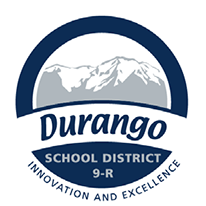Film Plastic Recycling Program: Turning waste into roads
DSD is one of the first school districts in Colorado to join the state’s new Circular Transportation Network (CTN), launched in early 2025 to collect hard-to-recycle film plastics such as grocery bags, bread wrappers, and bubble mailers.
Through a partnership with 4CORE and the Colorado Circular Economy Development Center, the district collects film plastic from schools and community drop-off sites. CTN then transforms that material into products in demand, including asphalt additive — strengthening Colorado roads while keeping plastics out of landfills.
Since April, DSD schools have collected 108 cubic feet of film plastic, and the goal is to increase that by 25% this year.
Community members can drop off clean, dry film plastics in blue bins located in every school lobby, at the District Administration Office (281 Sawyer Dr., Suite 100), or at the Facilities Warehouse (208 Parker Ave., Suite A) during business hours.
Bulk Milk Program: Less waste, more learning
Instead of single-use milk cartons, cafeterias now feature self-serve bulk milk dispensers — similar to those found in college dining halls. The switch reduces carton and food waste, cuts long-term costs, and helps students see how small daily choices can protect the planet.
The program launched at Needham Elementary last spring and now includes Riverview, Animas Valley, Needham, and Florida Mesa elementary schools. It’s supported through a grant from the Chef Ann Foundation, which helps schools improve meal quality and sustainability practices.
Students are learning firsthand how simple changes — like pouring just the milk they need — can make a big difference.
Teaching sustainability in action
“These programs empower students to see how small actions—like how we drink milk or recycle packaging—can make a big difference,” said Ron Reed, the district’s sustainability coordinator. “We want our kids to understand stewardship as something they can practice every day.”
With projects like these, Durango School District continues to model innovation and environmental responsibility — helping students connect classroom learning with real-world impact.


